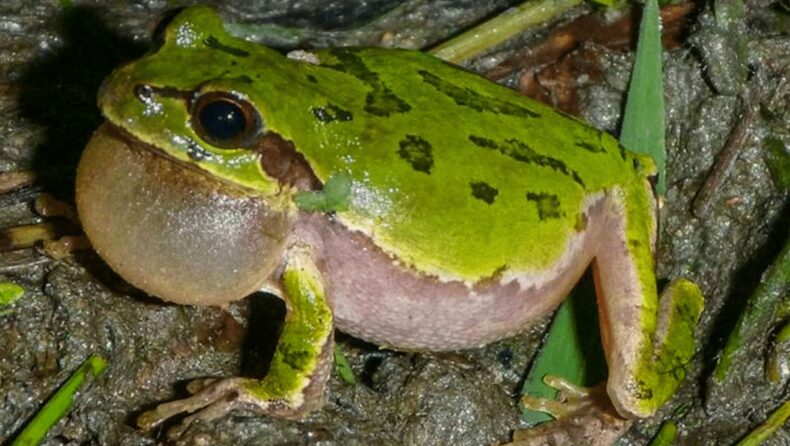Over the past two decades, an amphibian heart failure-causing fungus has spread throughout Africa, endangering the continent’s amphibians.
Hundreds of amphibian species have been wiped off worldwide by chytridiomycosis, the worst vertebrate sickness ever identified. Currently, 41% of amphibians are in danger of extinction, primarily due to fungal disease. At least only species found in Africa mainly had been infected through the chytridiomycosis plague.
Research published in Frontiers in Conservation Science suggests that the pathogen causes chytridiomycosis diseases through a specific fungus. The fungus Batrachochytrium dendrobatidis (Bd) is already well-established throughout Africa. Although, the infection may soon expand and spread deadly across Africa.
Extremely Contagious Diseases
Being a member of the fundamental fungal family known as chytridiomycosis, Bd produces asexual “swarm spores” that swim via a whip-like flagellum. Bd spores proliferate in cold, wet environments, embedded in epidermal cells, mouth, and skin of toads, small mammals, and echinoderms, but mainly amphibians there. As fungus does not require an animal vector to spread, it is highly contagious since the spores can contaminate at least 1,000 genetically distinct species. Tadpoles are rarely affected by the disease. But the fungus frequently kills adults, who often experience skin peeling, lethargy, weight loss, and ultimately cardiac failure.
The earliest known chytridiomycosis occurred in western North America in the late 1970s and early 1980s, in Central America and Australia in the late 1990s, and in South America in the early 2000s. Genetic testing has revealed the existence of at least four additional strains from South Korea, Switzerland, South America, and southern Africa, which are thought to be responsible for most Killer fungi.
The marine toad and the American bullfrog are two species that appear to be largely immune. Still, there is an indication that formerly reduced populations may be developing resistance to the disease.

The Amphibians Across Africa
The Vredenburg and associates first examined 2,972 museum specimens for the presence of any known Bd strains using quantitative real-time PCR. Between 1908 and 2013, these were gathered from Cameroon, Ethiopia, Kenya, Lesotho, Tanzania, and Uganda and stored at the California Academy of Sciences, the Museum of Vertebrate Zoology at Berkeley, and the Museum of Comparative Zoology at Harvard University.
Also, the researchers looked for Bd contamination in the skin swabs of 1,651 live frogs captured between 2011 and 2013 in Burundi, Equatorial Guinea, Cameroon, and Democratic Republic of Congo. Next, they searched the research journals from 1852 to 2017 for information on Amphibians from all over Africa that had or had not been visually infected with the killer fungus. The study examined the distribution of pathogens in nearly 16,900 amphibians. They provide projections for the frequency of Bd infection through time for Africa and specific nations and areas in this study.
The Early 2000 Bug
The findings indicate that the initial Bd-positive amphibians in the dataset originated in Cameroon in 1933. Between the 1930s and 2000, the infection prevalence in Africa remained below 5% per decade. Nonetheless, the infection prevalence spiked to 17.2% that year, and it continued to rise during the 2010s, reaching 21.6%. This increase in incidence after 2000 was much more significant in nations wherein more information is accessible, such as Cameroon, Kenya, Equatorial Guinea, and Burundi. For instance, up to 73.7% of samples were infected in Burundi.
The authors conclude that since 2000, the world has witnessed a significant rise in the occurrence of Bd that has gone largely unnoticed but creates a potential threat to amphibians throughout Africa. Eastern, central, and western Africa is the areas most at risk. At the same time, it is impossible to eliminate this microscopic virus from the wild. Many species can sustain it if given a chance. There is a moral obligation to get engaged and attempt to manage and diminish the pathogen whenever it appears humans are spreading its globe.













